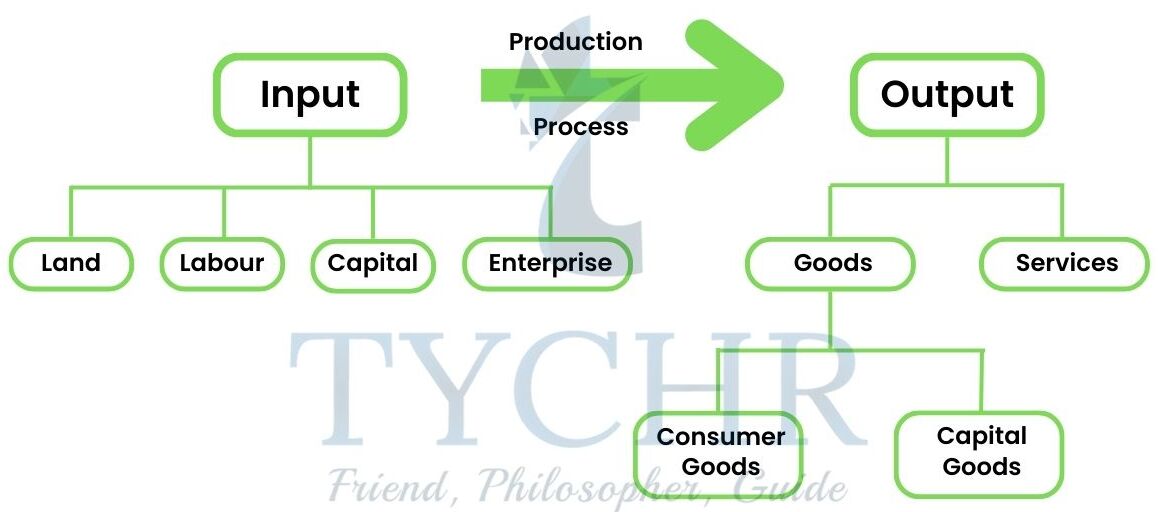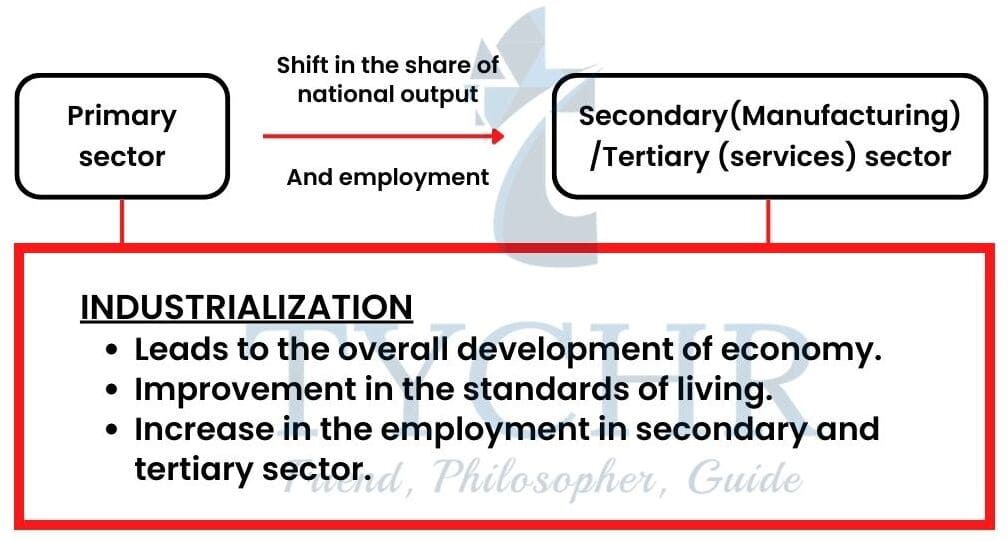introduction to business management Notes
The Introduction to Business Management forms the core of the IBDP Business Management syllabus, focusing on essential concepts such as business organization, stakeholder roles, and the influence of the external environment. This unit encourages students to develop analytical skills by exploring various management functions, including operations, marketing, finance, and human resources. Understanding these topics is crucial for successfully navigating both the Standard Level (SL) and Higher Level (HL) courses.
What is a business?
Well, any decision-making organization that is involved in the process of using inputs to produce output that has the power to satisfy the demands of its customers is called a business.

- Inputs- These are the raw materials used to produce output.
- Land- It is a factor of production which includes all the renewable and non-renewable sources of energy.
- Labor- Any mental/ physical exertion of human beings to produce output.
- Capital- It comprises of all the assets, wealth, resources that are used in the further production of goods/ services.
- Enterprise- A risk-taking entity that combines all the other three factors of production to produce output. Profit is the reward entrepreneurs receive for the risk undertaken.
- Output/ product- It refers to the final goods/ services that are produced with the use of inputs.
Goods- Physical/ tangible products. E.g. – Books, clothes, etc. - Services- Intangible products. E.g. – Healthcare, education, etc.
- Capital goods – Physical products used by businesses for further production. E.g.- Machinery, equipment, etc.
- Consumer goods- Goods that are sold to consumers for final consumption. E.g.- Appliances, Notebooks, etc.
Functions of business-
Human resource management-
It involves identification of HR needs of the business, workforce planning, recruitment and training, appraisals, dismissals, etc. to keep the human resources intact.
Finance and accounts-
Finance is a key functional area of business which includes monitoring of all the finance-related activities of an enterprise such as managing the source of finance, preparation of accounts, presentation of financial statements to the directors, shareholders, senior management and potential investors of the company.
Marketing- Marketing primarily involves:
- Market research
- Identification of target customers and their wants.
- Taking necessary marketing decisions of 4Ps to enhance the sale of the product.
Operations management-
This is the functional area of an organization responsible for arranging adequate raw materials for the production and maintaining the efficiency of production along with the quality of output.

Four interdependent sectors of business:
The businesses can be classified into four interdependent sectors based on the stage of production they are in.
Primary | Secondary | Tertiary | Quaternary |
| Enterprises in the primary sector participate in mining of natural resources that are processed and used for production of goods/services. E.g.- Fishing, | Businesses in this sector are involved in the conversion and processing of natural resources to produce final products. | On the other hand, the tertiary sector includes all the businesses that provide services to the customers. | This sector is a specialized subcategory of the tertiary sector, engaged in the use of knowledge/intellect for provision of information-based services. |
With the development of countries, there is change in the relative share of national output/GDP and employment from primary to secondary and tertiary sectors.
The shift in this share is termed as ‘sectoral change’.

Entrepreneur | Intrapreneur |
|
|
Entrepreneurship and Intrapreneurship
It is true that you might have to undertake risks and responsibilities if you plan to start your own business, but the reasons listed below might encourage you to think of the same.
Growth-
Capital growth (appreciation in the value of assets) acts as an incentive for the entrepreneurs to expand their business and make more profit out of it. Entrepreneurs like Mark Zuckerberg, Jeff Bezos have successfully made their fortunes from capital growth.
Earnings-
If a person has the capability to capitalize on the opportunities and turn the risks into profit, startup might be the best option to go for.

Transference and inheritance –
Most of the entrepreneurs think of their business as something which can be transferred to their upcoming generation who can inherit and expand it. Example- Reliance Ltd. was started by Dhirubhai Ambani and then inherited by his son Mukesh Ambani, who is the richest entrepreneur in Asia today. With his entrepreneurial spirit, he continued his father’s business and took it to another level of height.
Challenge-
One who is driven by challenges and takes pride in overcoming them can think of starting a business.
Autonomy-
When a person works under another person in authority in an organization, he/she must adhere to the guidelines and work in the provided working conditions and pay. On the contrary, a self-employed person is independent.
Security-
Job security is a dreadful issue for all the employees working in private organizations. They may be dismissed by the company’s senior management for the company’s benefit, at any point of time. In an enterprise of your own, these risks are quite eliminated.
What are the steps in the process of starting a new business?
1.) Before a business can start the operations, it needs to fulfil all the legal requirements related to setting up of an organization. The business must be registered in the books of registrar after submitting the necessary documents and details.
2.) Next step includes taking up necessary decisions related to finance and capital requirements of the enterprise. Evaluation of the amount of funds required, identification of the sources of finance, etc. are the major decisions to be taken.
3.) Before a business can start the operations, it needs to fulfil all the legal requirements related to setting up of an organization. The business must be registered in the books of registrar after submitting the necessary documents and details.
4.) Once the registration happens, a business bank account (current account) needs to be opened to facilitate the financial operations such as payments and receipts.
Problems that may be faced by a new business/ startup:
Lack of finance –
Due to the lack of credentials, they face difficulty in borrowing funds. In few businesses, either the funds borrowed prove insufficient, or the interest charges are so high that the entire cash flow position is affected.
Shortage of working capital-
Cash flow problems arise in most of the new firms because of the shortage of working capital (capital required to meet day-to-day obligations of an enterprise). It may happen when there is a lengthy credit period facility given to customers. Increase in unused stocks of raw materials, unexpected changes in external environment are few other reasons for shortage of working capital.
Marketing problem-
A planned marketing is necessary to provide the target customers with right products at a reasonable price. If the marketing plan fails, the sale of the product would be affected adversely, and hence the revenue and the profit, leading to complete failure.
High production cost-
The small startups are not able to benefit from the economies of scale (benefits availed by established businesses due to large scale of operations, e.g., discounts on bulk purchases.) because of their small scale of operations. Moreover, incurring fixed costs with a small portion of revenue generated in the beginning years leads to higher production cost.
Production problem-
It is quite difficult for a new business to forecast the demand levels of customers accurately in the initial years. This leads to the problems of overproduction or underproduction causing dissatisfaction among customers many times.
Human resources management-
A new business might find the management of its human resources quite challenging in the beginning.
Legalities- All the businesses must necessarily comply with the legal formalities and paperwork such as registration, licensing, consumer and employee protection laws, etc. A new business firm may find it confusing to assimilate it in the beginning, leading to payment of penalties.
Changes in external environment-
An established enterprise has the power to insulate itself from the external changes due to the experience and provisions made in advance. But a new firm may be vulnerable to such external changes (E.g.- technological change, change in government regulations, economic recession, etc.).
What is a business plan?

A detailed report on the goals and objectives of a business organization. It acts as a planning tool to set the targets after considering the available resources to get an idea of how the activities are to be performed to reach the defined objectives. The key elements of this report are:
Business-
The report needs to contain a few things related to business. The name, address, details of the owner, type of business organization, costs of premises, etc.
Product-
Key areas to be covered would be details of the good/service to be produced, costs and the pricing strategies to be followed, place and process of production, details of suppliers of the raw materials, etc.
Finance-
Proposed sources of funds, break even analysis, cash flow and revenue forecast, rate of return for investors, etc. are the few subjects of issue.
Market-
The report also enlists the nature of target market, plan for market segmentation, expected growth and sales, competitor analysis (SWOT), etc.
Personnel-
The business plan necessarily includes the plans related to recruitment and training of employees, their remuneration, job roles, organizational structure, etc.
Building a strong foundation in the Introduction to Business Management prepares students for success in IBDP Business Management. By mastering key concepts such as stakeholder roles, external influences, and management functions, students develop critical decision-making skills essential for real-world applications. Tychr’s expert IB Business Management SL & HL tutors provide personalized support, ensuring students excel in their academic journey and gain a comprehensive understanding of business management principles.

